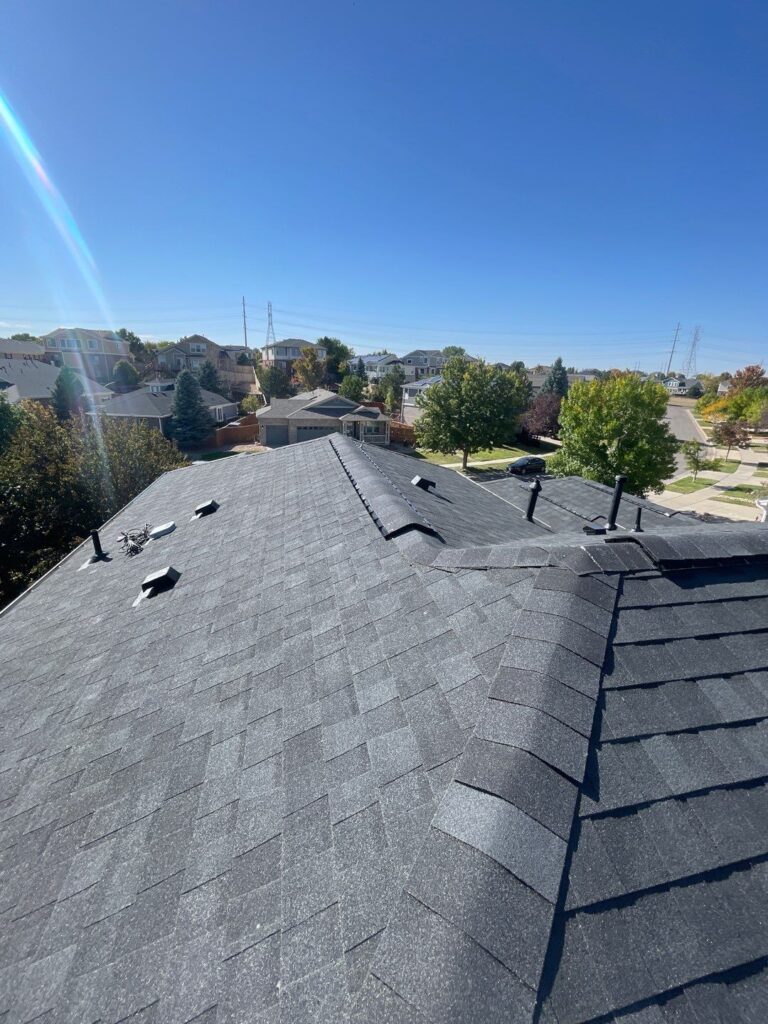Winter weather brings freezing temperatures, snow accumulation, and ice formation, all of which can put significant stress on your roof . Without proper preparation, these elements can lead to leaks, ice dams, and structural damage , resulting in costly repairs.
To help you safeguard your home, we’ve compiled the most effective winter roofing strategies to maintain durability and prevent weather-related damage.
1. Conduct a Full Roof Inspection Before Cold Weather Sets In
A pre-winter roof inspection helps detect early signs of wear or damage before snow and ice make repairs more difficult. Addressing minor problems ahead of time can prevent expensive fixes later.
Key Areas to Examine:
✔ Shingles and Roofing Materials – Look for any missing, curled, or cracked shingles that could allow moisture to penetrate.
✔ Flashing and Sealants – Check for any openings or gaps around chimneys, skylights, and vents that could allow water infiltration.
✔ Gutters and Drainage System – Confirm that gutters are clear and properly secured to handle snowmelt.
✔ Roof Valleys and Eaves – These areas are prone to heavy water flow; check for weak spots.
For a thorough assessment, consider hiring a professional roofing company in Denver before winter arrives.
2. Keep Your Gutters and Downspouts Free of Debris
Blocked gutters and downspouts can cause ice dams , which force melting snow to seep under your shingles. This can result in water damage, mold growth, and structural problems.
How to Maintain Your Gutters:
✔ Remove leaves and debris before temperatures drop.
✔ Check for loose fasteners and reinforce weak areas.
✔ Position downspouts so they carry water at least five feet away from your home’s foundation to prevent drainage problems.
✔ Install gutter guards to reduce clogs and make maintenance easier.
By keeping your drainage system clear, you allow snowmelt to flow away efficiently , reducing the risk of ice accumulation and leaks.
3. Reinforce Attic Insulation and Ventilation
A well-insulated and ventilated attic helps regulate your roof’s temperature , preventing heat from escaping and causing uneven snowmelt—one of the main contributors to ice dam formation .
Best Practices for Attic Insulation:
✔ Check insulation levels and upgrade if necessary to prevent heat loss.
✔ Close gaps and cracks around chimneys, light fixtures, and vents to keep warm air from leaking into the attic.
✔ Ensure proper ventilation with soffit and ridge vents to promote airflow.
✔ Monitor attic humidity levels to prevent condensation buildup.
Maintaining balanced attic insulation and ventilation reduces the risk of moisture damage and improves energy efficiency during winter.
4. Trim Nearby Tree Branches to Prevent Damage
Tree limbs weighed down by snow or ice can break and fall onto your roof , damaging shingles, gutters, or even causing punctures.
Tree Maintenance Tips:
✔ Trim branches that extend over or close to your roof before winter.
✔ Remove weak or dead limbs that could break under heavy snow.
✔ Keep trees at least six feet away from the roofline to prevent debris buildup.
Regular tree maintenance minimizes the risk of impact damage and keeps your roof free from unnecessary obstructions.
5. Remove Excess Snow to Reduce Roof Strain
While roofs are designed to withstand a reasonable amount of snow, excessive buildup can lead to structural stress and, in extreme cases, even collapse.
Guidelines for Safe Snow Removal:
✔ Use a roof rake with a long handle to clear snow while remaining safely on the ground.
✔ Steer clear of sharp tools that could potentially damage shingles or roofing materials.
✔ Clear snow gradually and evenly to prevent sudden weight shifts.
✔ Hire professional roofers in Denver for heavy snow removal if needed.
Keeping your roof free from excessive snow prevents long-term damage and ensures structural integrity .
6. Fix Any Roof Damage Before Winter Arrives
If your roof has existing problems, cold temperatures and harsh weather will only make them worse . Addressing small issues before winter prevents them from turning into major repairs.
Signs You Need Repairs:
✔ Water stains on ceilings or attic walls.
✔ Shingles that are broken, missing, or curling .
✔ Cold drafts or temperature fluctuations inside your home.
✔ Sagging or uneven areas on the roof.
Scheduling an inspection and necessary repairs with a trusted roofing company in Denver before winter ensures your roof is fully prepared for the season .
7. Know How to Handle Winter Roof Emergencies
Even with proper precautions, severe winter storms can cause unexpected damage . Knowing how to react can help prevent further deterioration until repairs can be made.
Emergency Roofing Tips:
✔ Leaks: Contain water using buckets and apply a temporary seal if possible.
✔ Ice Dams: Apply calcium chloride to melt ice in problem areas—avoid using sharp tools.
✔ Heavy Snow Accumulation: Remove excess snow with a roof rake if buildup exceeds 12 inches.
✔ Shingle Damage: Use a waterproof tarp to cover exposed areas until permanent repairs can be completed.
Acting quickly in a roofing emergency helps minimize damage and reduces long-term repair costs .
Conclusion
Winter weather can take a serious toll on your roof , but with the right precautions, you can avoid costly damage and extend its lifespan . By clearing gutters, reinforcing insulation, trimming trees, and managing snow buildup , homeowners can keep their roofs strong and leak-free throughout the coldest months.
For professional assistance, Tried and True Roofing , a leading roofing company in Denver , provides expert inspections, repairs, and winter maintenance services to help protect your home.


